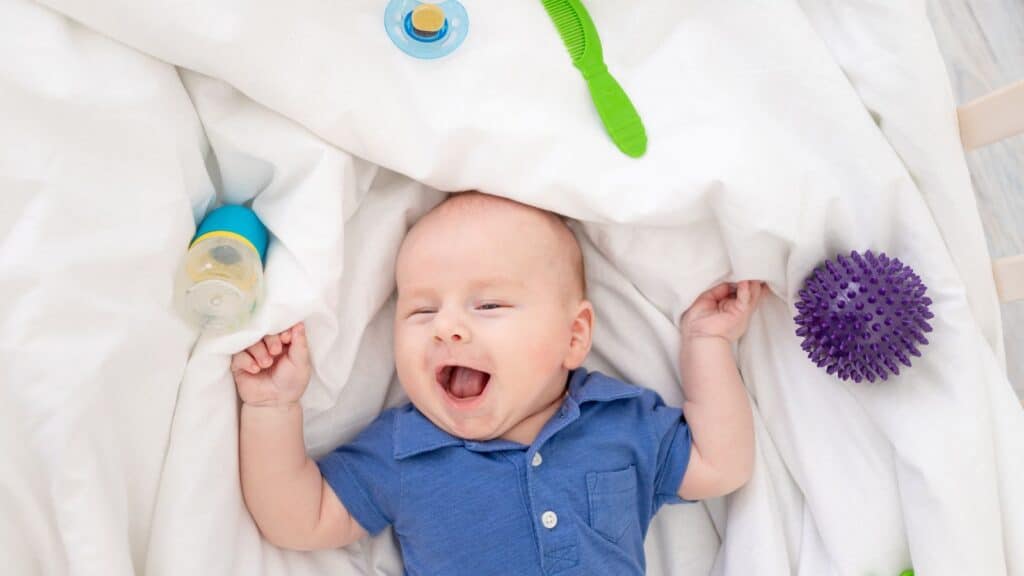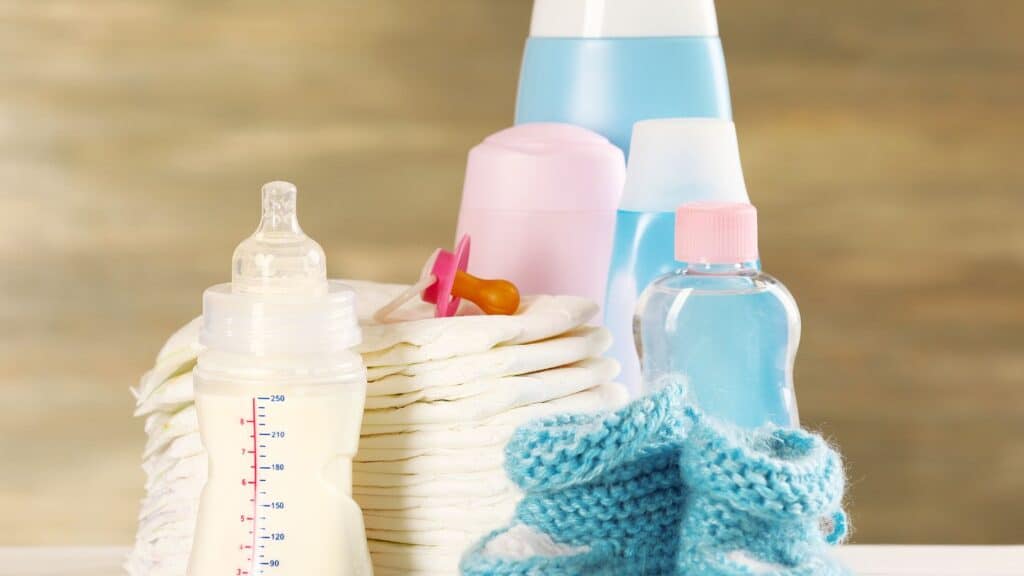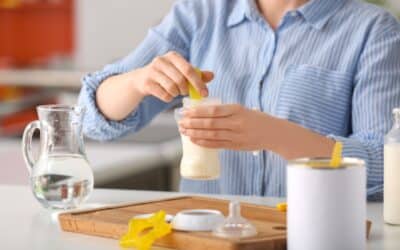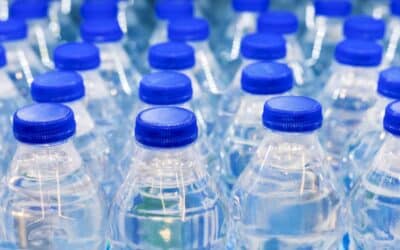Baby water supplies are a cornerstone of emergency preparedness for families with infants. Such preparation ensures that the youngest, most vulnerable family members have access to safe hydration during crises. Parents must prioritize and secure adequate clean water to meet any challenge.
Understanding Baby Water Needs
Babies possess unique hydration requirements quite distinct from those of adults. Infants rely heavily on breast milk or formula for hydration, but their need for supplemental baby water supplies increases as they grow. Their delicate systems demand pure, uncontaminated water to prevent illnesses and to support their rapid growth and development.
- Sensitivity to Contaminants: Babies’ underdeveloped immune systems make them more susceptible to bacteria and chemicals, necessitating clean and safe water use.
- Mixing with Formula: When parents prepare formula, the water must be sterile to safeguard the baby’s health, reinforcing the need for uncontaminated water supplies.
- Hydration: As infants transition to solid foods, water becomes an essential daily intake to maintain proper hydration levels and facilitate healthy digestion.
- Quantity and Quality: Unlike adults, babies require smaller quantities of water, yet the quality must be exceptionally high to support their developing kidneys, which cannot handle impurities present in regular tap water.

Choosing the Right Baby Water Supplies
Selecting the right baby water supplies is crucial for ensuring the health and well-being of infants. Parents must choose water that meets the highest standards of purity and safety.
1. Purified Water
Purified water undergoes filtration and other processes that remove chemicals and contaminants, making it safe for baby consumption. This type of water ensures that no harmful substances compromise a baby’s health.
2. Distilled Water
Distilled water, the result of condensation from steam, is free from minerals and impurities. It is highly recommended for mixing with baby formula as it provides consistency in mineral content, which is critical for infants.
3. Sterile Water
Sterile water is commercially sterilized to kill all bacteria and microbes, making it exceptionally safe for medical or daily baby use. It eliminates the risk of waterborne diseases, essential for a baby’s developing immune system.
Factors to Consider When Selecting Water
Several factors need to be considered when choosing water for various baby needs. The selection criteria depend largely on the intended use, such as:
- Baby Formula: Parents must consider non-fluoridated, sterile or distilled water to prevent exposure to unnecessary chemicals.
- Mixing with Baby Food: Use purified or distilled water to ensure that only the cleanest water dilutes baby food, preserving its nutrients and taste.
- Hydration: For regular hydration, sterile or purified water is preferable to support overall health and ensure safety without compromising on hydration quality.
Storage Solutions for Baby Water Supplies
Ensuring the safety and accessibility of baby water supplies calls for thoughtful storage solutions. It is vital to keep water uncontaminated and readily available, especially in emergencies.
- Use Clean, Airtight Containers: Store water in containers manufacturers have designed for safe water storage. This practice prevents the entry of bacteria and contaminants.
- Keep in a Cool, Dark Place: Direct sunlight or heat exposure can compromise water quality. A cool, dark storage area maintains water integrity over time.
- Rotate Supplies Regularly: Rotate water supplies every six months to ensure freshness. This routine guarantees that the water remains safe and palatable for baby consumption.
- Label Containers with Dates: Marking the storage date on containers helps track and manage the rotation schedule efficiently. It aids in using older supplies first, ensuring none go to waste.
How Much Water to Store Per Day for Your Baby
The amount of water to store per day depends on the baby’s age, diet, and health needs. On average, storing 1 liter of water daily per baby ensures enough for drinking, formula preparation, and mixing with baby food. This allowance considers the necessity for hydration and meal preparation, offering a buffer in emergencies.
Tips for Organizing Water Supplies
Streamlining the organization of baby water supplies fosters ease and efficiency, particularly during critical times. With strategic placement and order, caregivers can maintain a well-orchestrated supply ready for any need.
- Allocating a specific place for baby water supplies simplifies inventory management. This strategy ensures that all stored water is in one location, mitigating the risk of overlooking or misplacing supplies.
- Organizing water containers to be easily accessible can save time and reduce stress during emergencies. Ensure the newest additions go to the back and the older ones stay at the front for immediate use.
Maintaining the Quality of Baby Water Supplies
Maintaining the purity and safety of baby water supplies requires diligence to ensure the well-being of infants. Parents must adopt a proactive approach to keeping water fresh and suitable for their babies’ consumption.
- Check Expiration Dates Promptly: Parents should note the expiration dates of bottled water on purchase to ensure their suitability.
- Set Reminders: Using a calendar or a reminder app helps revisit water supplies periodically, ensuring none surpasses the expiration date.
- Regular Inventory Checks: Parents must conduct frequent checks to remove expired bottles from the collection proactively.
Techniques for Sterilizing Containers
Ensuring the cleanliness of containers is fundamental for the safety of baby water supplies. Adopting effective sterilization techniques protects infants from harmful bacteria and germs.
1. Boil Containers
Parents can sterilize baby water containers by boiling them for five minutes. This method kills most germs and prepares the container for safe use.
2. Use Sterilizing Solutions
Sterilizing solutions serve as an alternative when boiling is not feasible. Parents must follow the instructions on the sterilizing solution accurately, ensuring all surfaces come into contact with the solution.
Techniques for Sterilizing Water
Sterilizing water is critical in safeguarding baby water supplies against potential contaminants. Proper techniques guarantee the water’s safety for infant consumption or use in formula preparation.
1. Boiling Water
A boil must last at least one minute to sterilize water. This process ensures that the water is safe for the baby to consume.
2. Chemical Disinfection
If boiling is not an option, using a certified disinfectant for water is necessary. The quantity and duration of contact time will depend on the specific disinfectant used, and parents should strictly adhere to the manufacturer’s guidelines.
Planning for Different Emergency Scenarios
Emergency scenarios necessitate meticulous planning and preparedness, especially when safeguarding family and home. Clear guidelines for disasters, including natural calamities and household emergencies, are imperative.
Preparing for Floods
Take decisive steps to protect your home and belongings in the face of flooding, especially when caring for vulnerable infants.
- Elevate Essential Items: To prevent contamination, appliances, and baby water supplies must be lifted above potential water levels.
- Secure Documents: Place important family documents in a waterproof container.
Preparing for Earthquakes
Earthquake readiness requires anchoring items and assembling emergency resources to ensure safety and access to necessities, including baby water supplies.
- Secure Heavy Furniture: Fasten bookcases, shelves, and heavy furniture to walls to prevent tipping.
- Prepare an Emergency Kit: Include essentials like water, food, a flashlight, and batteries. Ensure you add baby water supplies to the kit.
Preparing for Hurricanes
In anticipation of hurricanes, safeguarding your home and formulating a clear evacuation strategy are paramount to ensuring the safety of all family members.
- Board Windows: Use plywood or storm shutters to protect windows from breaking.
- Create an Evacuation Plan: Familiarize every family member with evacuation routes and establish a meeting point.
Contingency Plans for Power Outages
When power outages occur, having a contingency plan with functioning essentials and ready-to-eat supplies is essential for maintaining normalcy and safety.
- Maintain Flashlights and Batteries: Regular checks ensure these items are operational when needed.
- Stock Non-Perishable Foods: Keep a supply of foods that do not require refrigeration, cooking, or preparation.
Contingency Plans for Water Contamination Alerts
In response to water contamination alerts, it’s critical to prioritize clean water storage and remain updated through reliable sources to protect health, particularly for infants.
- Store Bottled Water: For several days, keep a sufficient stock of bottled water, especially focusing on baby water supplies.
- Stay Informed: Follow local news or a credible online source for updates and instructions on when it’s safe to use tap water again.

Conclusion
Ensuring your household prepares adequately for emergencies highlights the critical role that baby water supplies play in maintaining health and safety. It’s vital to stock baby water supplies as part of your emergency kit. This preparation affords peace of mind during unforeseen crises.



